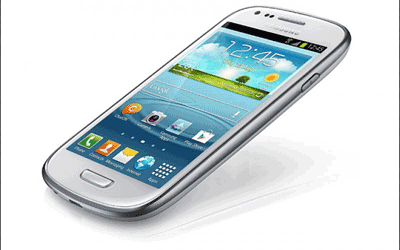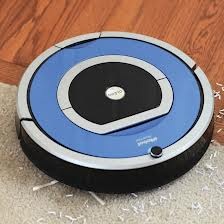
AI is the acronym for “artificial intelligence,” the branch of computer science that creates intelligence for machines and robots. Dartmouth College professor John McCarthy, who coined the term in 1955, defined it as “the science and engineering of making intelligent machines.” The central problems that AI solves or attempts to solve include such traits as reasoning, knowledge, planning, learning, communication, perception, and the ability to move and manipulate objects.[
Although the acronym and term may not be in the news daily, the effects of artificial intelligence certainly are. Consider the Samsung Electronics’ Galaxy S4 smartphone. It expands on the Galaxy S III, an award-winning phone that includes such AI features as Smart Stay eye tracking, predictive text input, and S Voice, a voice assistant akin to Apple’s Siri.

Galaxy S III

Apple Siri
Eye tracking works on the principle of snapping pictures of your eyes both indoors and outdoors. During a learning phase, the software is trained to recognize eye movements in various lighting situations. This is similar to the older voice recognition on your telephone, whether land line or cell phone.
How competitive the AI field is can be seen in the legal battle between smartphone makers LG and Samsung. At the day of the recent Galaxy S4 introduction, LG officially announced its Smart Video feature for the Optimus G Pro, and later Samsung touted a similar Smart Pause feature for its flagship. As a result, LG says Samsung violates its eye-tracking patent with Smart Pause.
Eye tracking has even been used to find quickly those people who are the leaders of group. See www.electronicproducts.com/News/Eye-tracking_technology_finds_group_leader_fast.aspx.
Not to be left out of a discussion of AI, Apple’s Siri learns from its use. As Jeff Bausch reported of Siri on electronicproducts.com, “What’s really funny is that the program’s responses to these questions often pack some wit to them, proving that the iPhone 4S team not only thought of everything, but that they have a sense of humor, too.” One-part voice-recognition, one-part artificial intelligence, Siri was developed by SRI International (hence the name), an independent organization that actually launched the program on the iTunes App Store back in February 2010. Specifically, it came under SRI’s “CALO” Project, the largest artificial intelligence project in U.S. history. Up until the evening prior to Apple announcing that it would be available exclusively on the iPhone 4S, anyone could go to the iTunes App Store and download the original program for free and have it work on older iPhones (going back to the 3GS model).

Hasbro's Furby
Furby, a toy from Hasbro, also learns behavior, thanks to one of its chief components, a digital signal processor.

iRobot's Roomba
The vacuum-cleaning Roomba robot is another example of the use of AI. Roomba brings robotic technology to the everyday chores of sweeping and vacuuming. With the touch of a button, Roomba collects dirt, pet hair and other debris from all areas of the floor, including under and around furniture and along wall edges. Robotic technology will advance, as Alexandra Dopplinger and Brian Dipert report on electronicproducts.com, “Many humanoid manufacturing robots mimic the upper torso of a factory worker, complete with shoulders, arms, elbows, wrists, fingers, thumbs, and advanced machine vision to guide the numerous precise motions needed for manufacturing miniscule electronics components. The embedded vision systems in manufacturing robots have a camera connected to a high-performance image processor for object recognition and a real-time control system for precise component placement.”
Examples are numerous. Vigilent creates artificial intelligence-based energy management software learns operational habits and optimizes building energy efficiency and consumption.

Vecna's QC Bot. Image via vecna.com.
The QC Bot, designed by Vecna, a company that focuses on developing advanced technologies for the healthcare environment, was created to improve the logistic workflow of hospitals. As Nicole DiGiose reports on electronicpProducts.com, “Since operations in healthcare facilities need to balance time, resources, and costs, the QC Bot automates everyday tasks, such as escorting patients to appointments and delivering medications, to provide relief to the busy hospital staff, who are then able to focus on more-complex duties. With daily routines being taken care of, the self-service robot improves efficiency and reduces medical errors, gaining both patient and staff satisfaction.”
Fanny Mlinarsky, President of octoScope, recently observed in an interview carried on electronicproducts.com that artificial intelligence is the next big shift in how people will use their smartphones. “The HAL-9000 computer envisioned by Arthur C. Clark in “2001” is a bit late to market now, but its time has definitely come with Apple's Siri. That is the transition from research to commercial use. With pervasive broadband connectivity, powerful parallel computing in the palms of our hands, sophisticated software development tools, voice recognition, wireless sensors and location awareness, the sky is the limit for where the imagination of platform and applications developers will take us next,” Minarsky said.
Advertisement
Learn more about Electronic Products Magazine





